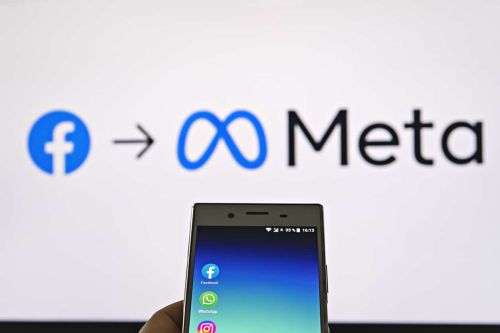A decade old business named MetaX LLC recently commenced a trademark infringement lawsuit against Facebook’s parent company after it rebranded itself with the same name. The installation-art company filed suit in July against Meta Platforms claiming the social media giant decimated the small business — and it can no longer provide its goods or services using the Meta mark due to the likelihood of consumer confusion. The smaller company also emphasized in their Meta Lawsuit against Facebook that the scandals that have plagued the company in recent years have made sharing the name impossible.
What Did the Meta Trademark Lawsuit Argue?
In the Meta lawsuit against Facebook, the installation-art company argued that it is being crushed in the marketplace because of the infringement and cannot stand a chance against the “corporate goliath” of Facebook. The company, which developed immersive technologies using virtual and augmented reality used for special events, claims that Facebook ignored its registered trademark and knew about the company since it had praised its services in 2017. In addition to asserting a claim for trademark infringement, Meta also says in the lawsuit that Facebook engaged in unfair competition.
Although Meta alleged that it contacted Facebook over its improper use of the mark, attempts at a resolution failed. The smaller company subsequently filed suit seeking an order barring Facebook from using the name “Meta,” as well as monetary damages.
When Does Using the Same Name Constitute Trademark Infringement?
Along with logos, catchphrases, or symbols, a company’s name is one of the primary ways the public identifies a brand. Not only is it an integral part of a business’s branding, but it also represents its goodwill among consumers. Regardless of its size, a company may invest a significant amount of time and money into developing its brand, marketing its name, and building its reputation. When another business begins to use the same name to promote its own products or services, this may not only be frustrating — it might be in violation of trademark law.
The objective of trademark law is to prevent consumer confusion. A judge would consider a number of factors in determining whether there would be a likelihood of confusion among consumers, giving rise to infringement. Specifically, a court would look at the following:
- The appearance of the design
- The word placement
- The name’s phonetic sound
- The connotation of the mark
- The mark’s commercial impression
- Whether the goods or services are related
Generally speaking, a trademark will infringe upon another if the companies are within the same industry and the goods or services are distributed in the same channels. While the outcome of the Meta lawsuit remains to be determined, the installation-art company may have a good argument for infringement in that both companies have built their brands around the concept of the metaverse.
Are There Other Meta Lawsuits Against Facebook?
The art installation company isn’t the only business that alleges it would be harmed by Facebook’s rebranding efforts. New York-based investment firm Metacapital Management LP recently brought suit in Manhattan federal court against Meta Platforms asking for $60 million in damages — the same amount Facebook paid to acquire the regional bank, Meta Financial Group. The investment firm purported in the ongoing suit that it was not credible that Facebook was not aware of the company since it had known about the bank with the same name.
In another lawsuit, blockchain non profit Dfinity Foundation sued Meta for trademark infringement of its infinity-symbol logo. However, a San Francisco federal court dismissed the case, finding that Meta’s logo would not be likely to cause consumers to be confused due to differences in the design and the target audiences.
The Importance of Trademark Clearance Searches and Trademark Monitoring
The Meta lawsuit is a good example of the importance of conducting a thorough trademark clearance search, and how crucial it is to monitor a trademark. Not only should a company that is new or rebranding itself conduct a comprehensive trademark clearance search before using the mark, but a business with an existing trademark must monitor it for infringement for the duration of ownership.
Under trademark law, it is irrelevant whether infringement occurred inadvertently or on purpose. By conducting a full Trademark Electronic Search System search, and searching the state government databases, you can determine if a mark is available for use and help avoid an infringement lawsuit.
Importantly, a trademark owner has an obligation to defend their mark. By diligently monitoring your mark, you can help to protect it from potential infringement, dilution, and misuse. If a mark that is substantially similar is being used by another company, it may be necessary to issue a cease and desist letter — or commence litigation if the infringer refuses to stop using the mark.
Contact an Experienced Trademark Attorney
If another company is infringing upon your mark or you have been accused of trademark infringement, it is essential to have a trademark attorney by your side to protect your rights. At the Trademark Lawyer Law Firm, PLLC, we are committed to providing knowledgeable representation for a wide variety of trademark matters, including infringement cases. Located in Ann Arbor, Michigan, our attorneys work with entrepreneurs and business owners throughout the country to help them protect and defend their brands. Contact us today to schedule a free 15-minute consultation.





